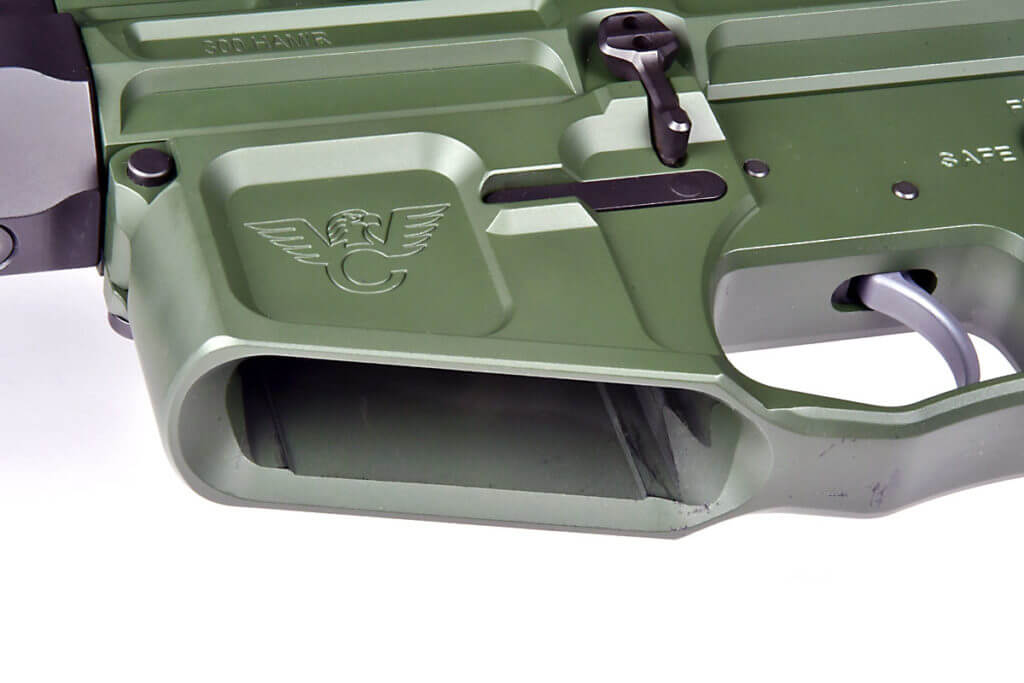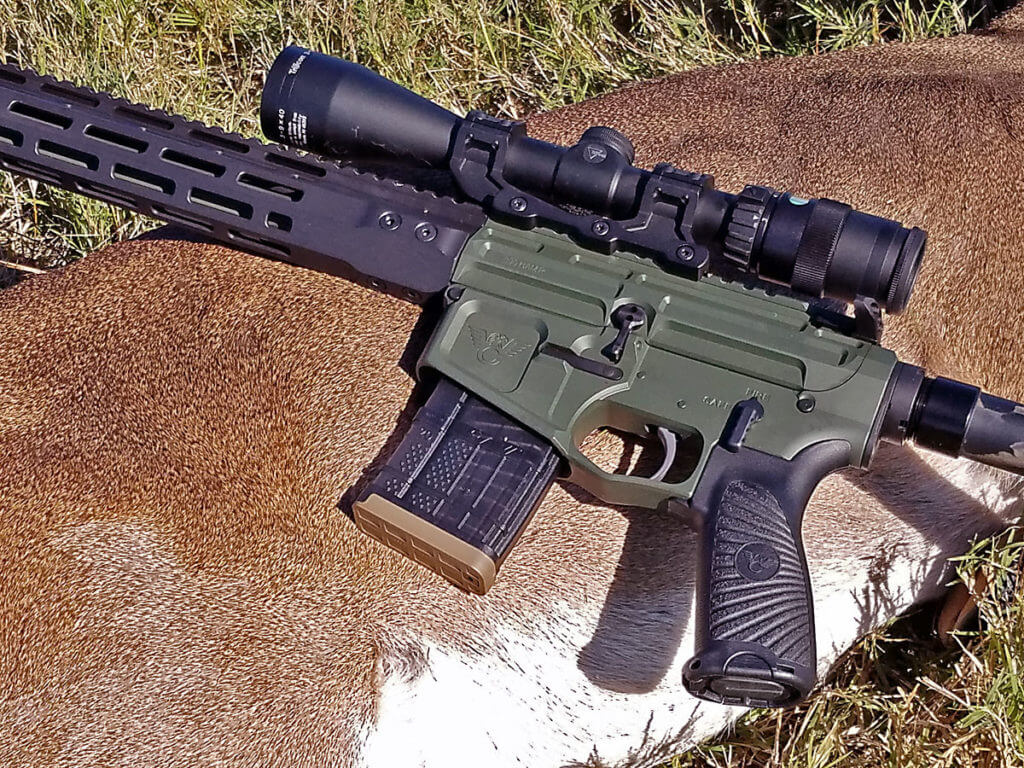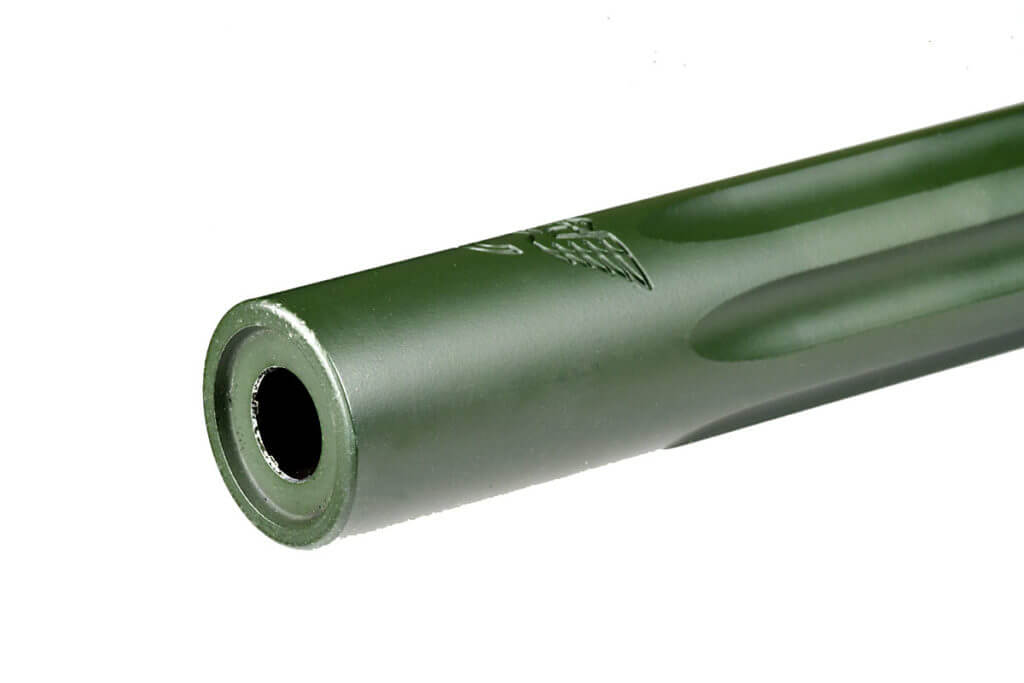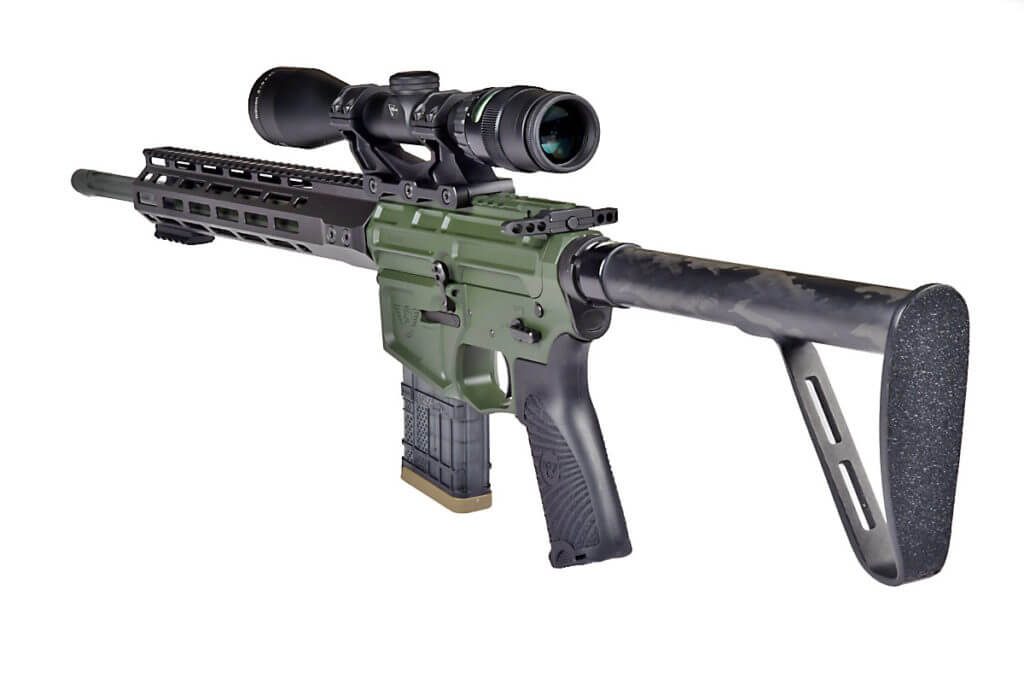
Weight and power.
Those have always been the primary factors limiting the utility of AR-platform guns for sporting use. Yes, you can shoot some potent cartridges from an AR-10 platform, but there’s generally a hefty weight penalty as the guns are considerably heavier than many of today’s lightweight bolt-action guns. An AR-15 can be made significantly lighter, of course, but just as the US military has found the 223/5.56 NATO cartridge to be lacking in some tactical situations, many people view the cartridge as marginal for deer-sized game — and it’s not even legal to hunt deer with in many states.
Bill Wilson, the respected lifelong competitive shooter, hunter, and owner of Wilson Combat firearms, set out to address that challenge a couple of years ago by developing a lightweight AR-15 that could do it all – from defending the castle to hunting medium-sized game – and do so with authority. The result was not only a new rifle weighing a bit less than seven pounds but a new cartridge that Wilson named the 300 HAM’R.
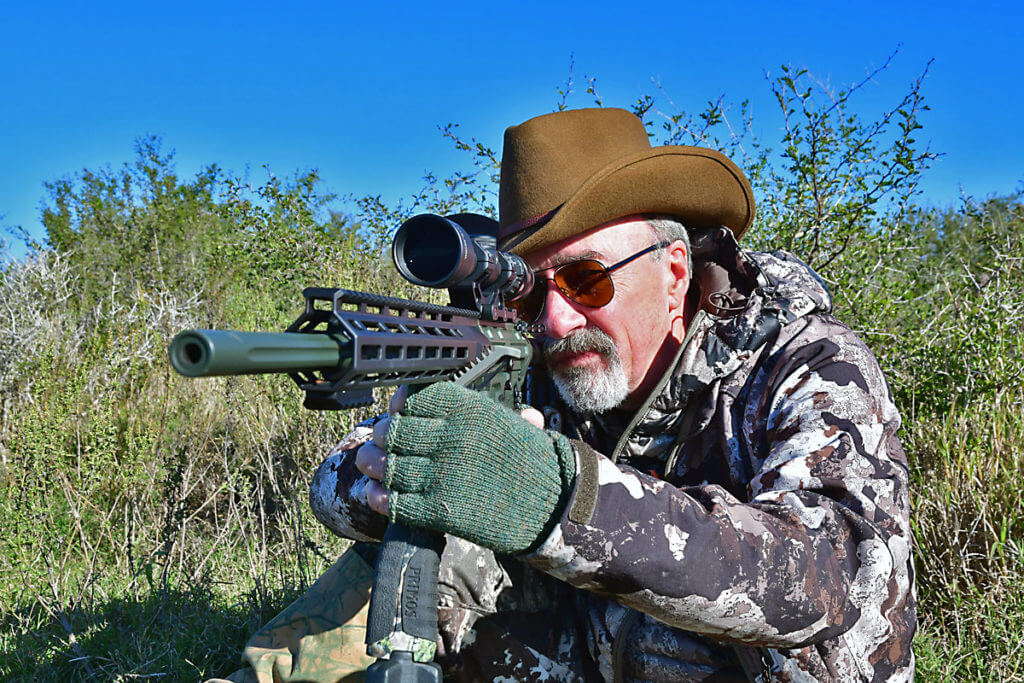
Wilson’s goal with the 300 HAM’R was to develop a round that could equal the terminal ballistics of the 30-30 Win., but have a much flatter trajectory by virtue of using high-ballistic-coefficient bullets. The design he came up with — a modification of his own 7.62x40WT cartridge — is based on a 223 Rem. case necked up to accept 30 caliber bullets, but with a 30-degree neck angle and a decreased case taper to maximize powder capacity. Out of a 16.25-inch barrel, the round launches a 125-grain bullet at a little more than 2,500 fps, compared to 2,175 fps for a 125-gr. 300 Blackout round and 2,365 fps for a 125-gr. 7.62×39 round. By virtually every standard of measurement, the 300 HAM’R dramatically outperforms comparable factory loads in either of those cartridges, particularly downrange. At 200 yards, the 300 HAM’R has 18 percent more retained velocity, 40 percent more energy and a 56 percent flatter trajectory than the 300 Blackout. Comparisons to the 30-30 Win. are equally instructive. Even out of a shorter barrel, the 300 HAM’R easily outruns and outpunches the 30-30 when you get much past 100 yards.
No matter how you slice the numbers, with same-weight bullets out of same-length barrels, the 300 HAM’R has greater velocity, less bullet drop and greater retained energy than comparable cartridges. In hunting, that translates into a cartridge you can have confidence in at 300 yards or less. In law enforcement and home-defense applications, it provides the ability to address threats with considerably more power and terminal effectiveness than a .223, but out of a platform that won’t weigh you down. In fact, all that’s required to convert an existing AR-15 to 300 HAM’R is a change of barrel. Wilson Combat sells barrels, complete uppers and complete rifles in several configurations for the 300 HAM’R.
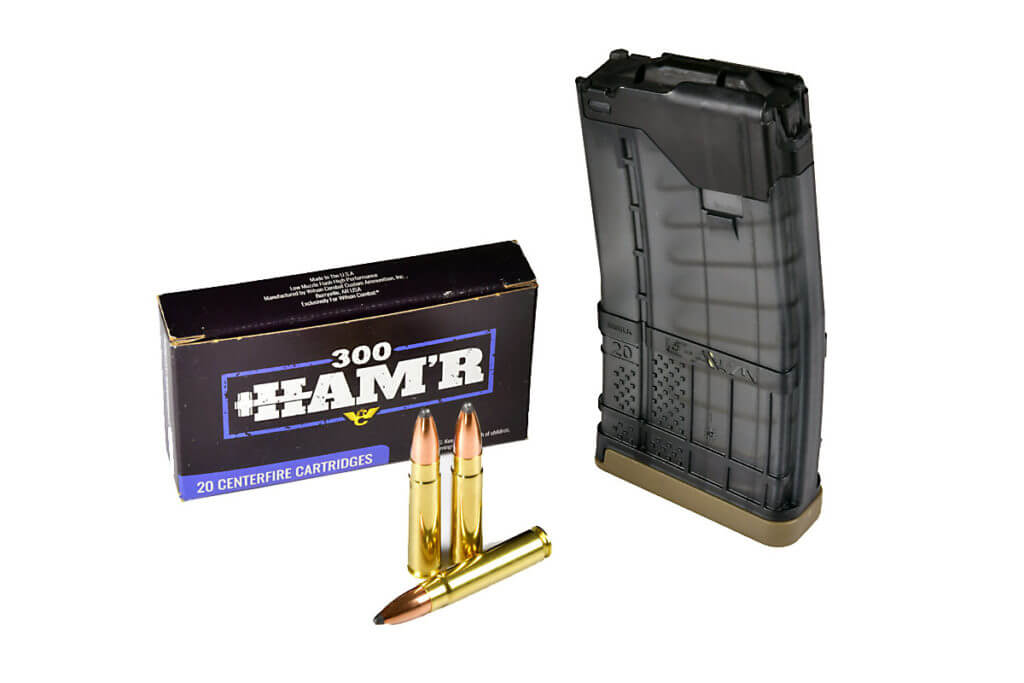
If you’re worried about factory ammo availability, you shouldn’t be. Wilson Combat currently offers more than 20 different loads, in bullet weights ranging from 95 gr. to 150 gr. As this is written, a major ammo maker is expected to introduce a couple of loads in the near future, and another is taking a hard look at the cartridge. Wilson Combat also makes reloading data readily available.
The beauty of the cartridge design is that it is a perfect match to a handy, lightweight AR-15 platform, and Wilson Combat has put it all together in the Ultralight Hunter rifle.
Even at a glance, you’ll immediately notice that there’s no excess baggage aboard the rifle’s lightweight machined billet receivers. The upper is of the flattop variety, providing ample room for mounting optics. Like the receivers and other critical components, barrels are made in-house by Wilson Combat to exacting specifications to maximize accuracy and durability. The Ultralight Hunter has a fluted, button-rifled 16.25-inch match-grade barrel with a precision muzzle crown and a chamber and gas port optimized for reliability. It has a 1:15 twist for maximum accuracy with 110-gr. to 135-gr. bullets. The barrel on the basic rifle is not threaded, but you can order the gun with one that is. Both the receiver and barrel are protected with an Armor-Tuff finish. Green and black color schemes are standard, as is a non-threaded barrel, but other options are available.
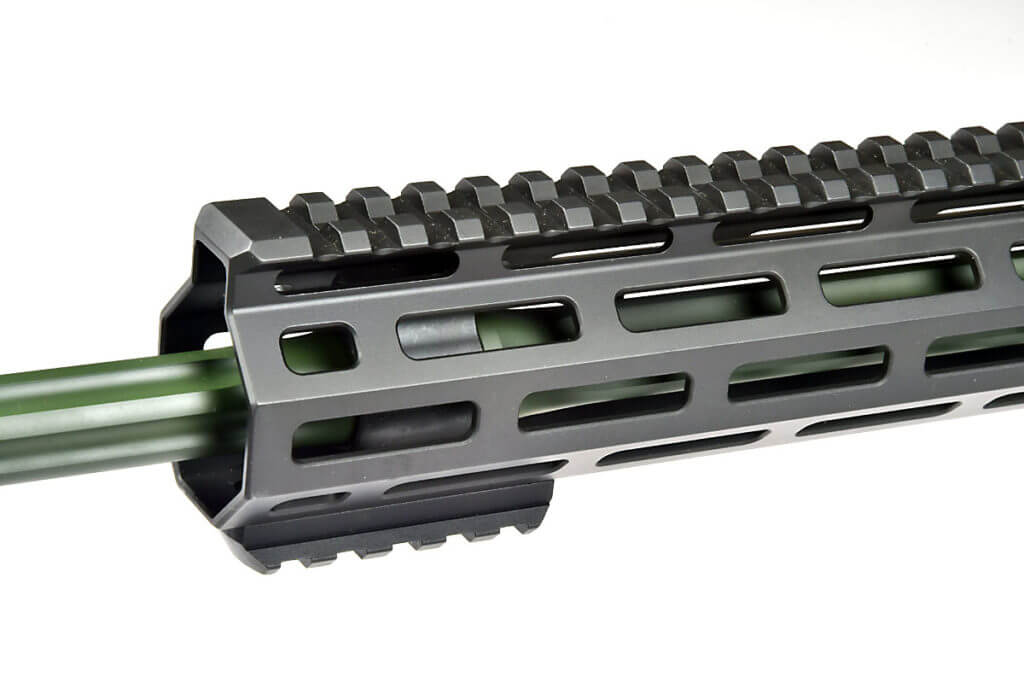
Weight is further reduced with the use of a carbon fiber closed-shoulder-plate buttstock from Smoke Composites. The closed-shoulder-plate design helps prevent snags and even has a couple of M-LOK slots built in. Reliability is enhanced by the use of a standard buffer with a decidedly non-mil-spec 43-coil chrome silicon flat wire buffer spring, which is designed to undergo a very high number of compressions without progressively losing power like standard springs.
The rifle uses an intermediate-length gas system with an SLR Rifleworks adjustable gas block. It also has a low-mass, nickel boron bolt carrier group. This advanced finish provides the advantages of increased resistance to wear and corrosion and has a very low coefficient of friction, which translates into smooth cycling without the need to constantly add lubrication. In fact, during a prolonged shooting session at Bill Wilson’s ranch, where several writers burned through a lot of ammo while putting several rifles through their paces, I never saw a single malfunction and never saw anyone stop to lube the rifles.
Other components are of equally high quality. These include a small-latch BCM charging handle, a Mission First tactical pistol grip and a Wilson Combat 12.6 inch M-LOK rail with three three-section Magpul Type 1 rail covers to provide an enhanced gripping surface.
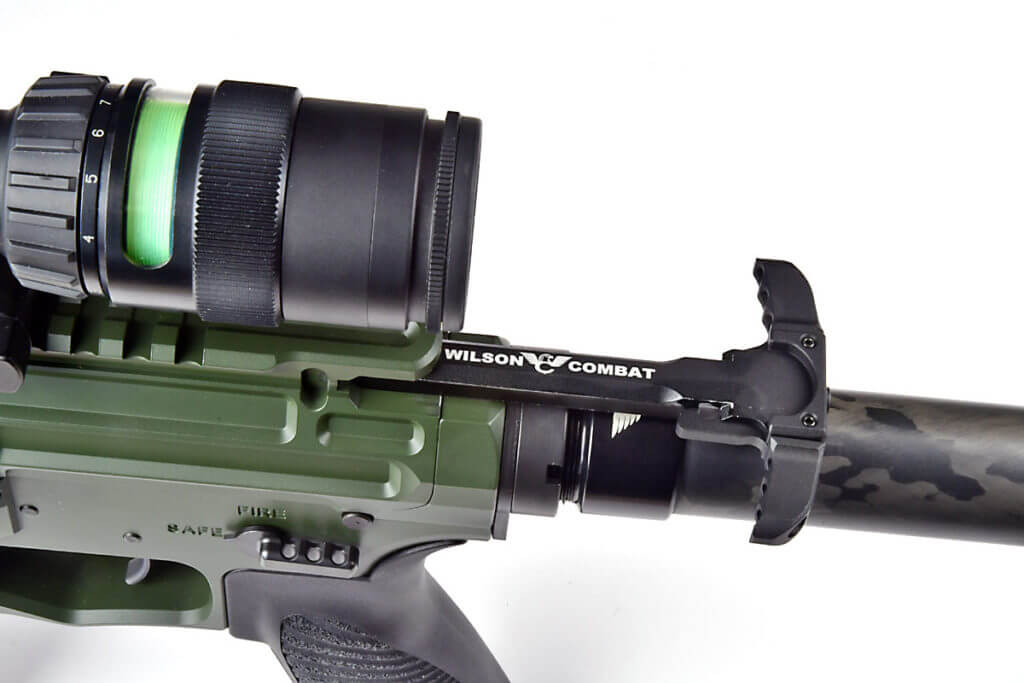
One of the things you’ll quickly notice about the rifle is the fact that it is equipped with an excellent trigger compared to those found on most other factory AR rifles. Wilson Combat calls it their M2 Tactical Trigger Unit and says it should have a pull weight of around 4 lbs. I was pleased to discover that the trigger on our test rifle broke consistently at a pull weight of 3 lbs. 5 oz. The two-stage trigger has a small amount of take-up before it stacks firmly, and then breaks crisply with a bit more pressure.
The rifle is guaranteed to shoot sub-MOA three-shot groups at 100 yards, and that’s what my test rifle did, but I kept shooting to see how the rifle performed with five-shot groups. I was not disappointed. Even though I generally prefer to use a higher-magnification scope than the Trijicon 3-9X40 scope provided for range testing, all three loads tested turned in average five-shot groups of just slightly over an inch, with two printing one-inch or less best groups. I consider that to be an excellent performance for such a light rifle with a relatively thin-contour barrel.
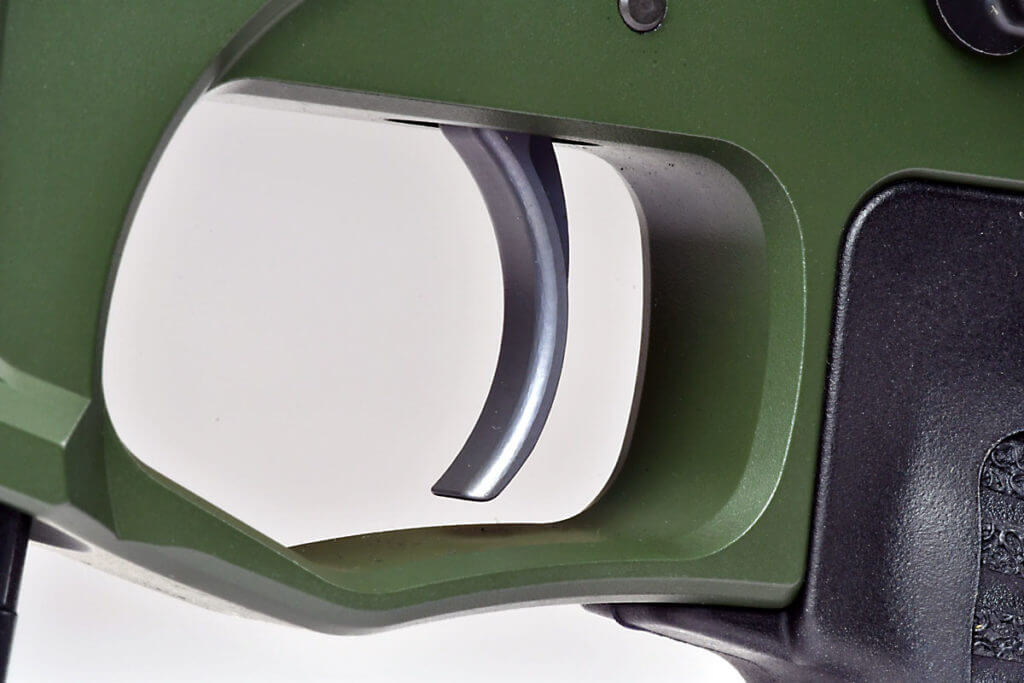
I wanted to further test the gun and cartridge in the field on a hog hunt near home in Texas with my pal Bryan Wilson of Frio County Hunts, but the hogs didn’t want to play the morning I had available to hunt. I did, however, harvest a whitetail deer for the freezer with a shot of just under 100 yards. Terminal performance was, as expected, impressive – and on par with anything I’ve ever shot with a 308 Win.
While the rifle proved to be at home in the field, I wouldn’t hesitate to use it in a home defense role, particularly when loaded with the right ammo. It’s worth noting that I didn’t see a lot of shift in point of impact with any of the three loads tested (including two 125-gr loads and one 130-gr. load), so keeping a spare magazine or two of your selected home defense ammo available may not handicap you in terms of switching from, say, a pure hunting round to a more desirable round for home defense if the bullets are close in weight. For the home-defense role, Bill Wilson recommends his load using a Speer 125gr TNT bullet. “It’s extremely accurate, creates a devastating wound channel and doesn’t over-penetrate,” he says.
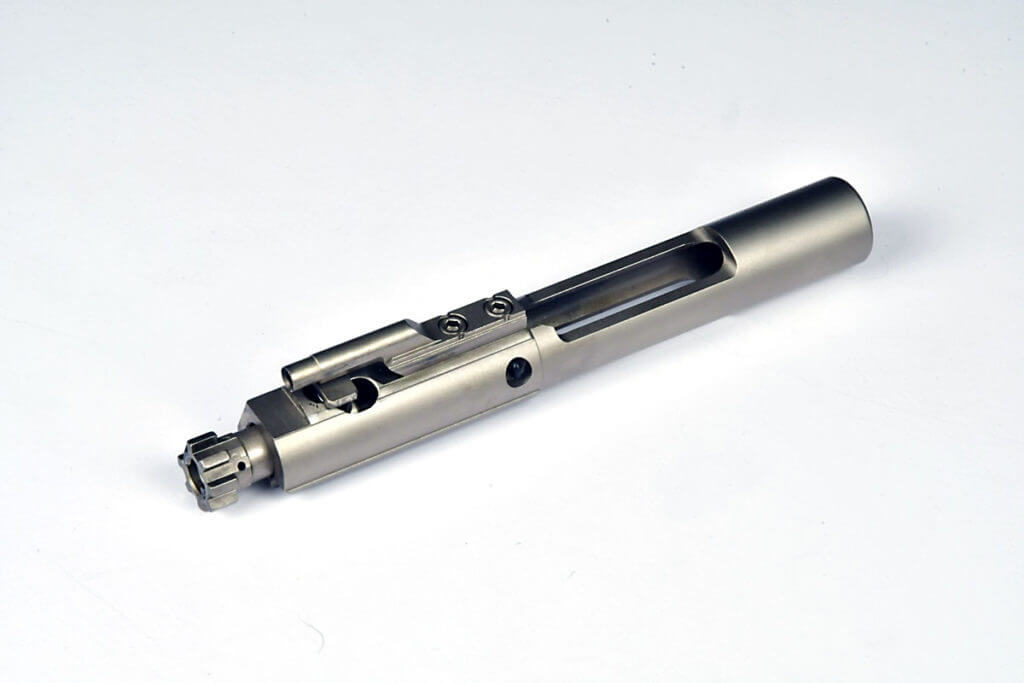
If you want a rifle with the level of quality and performance this one provides, you’ll pay for it, as the Ultralight Hunter has a price tag of $3,295. But Wilson Combat isn’t known for doing things on the cheap. They’re known for doing things right and making guns that are superbly reliable and accurate. They’re known for making guns that you can bet your life on.
The Wilson Combat Ultralight Hunter breaks new ground while continuing this tradition.

Wilson Combat Ultralight Hunter 300 HAM’R
| Load | Avg. Velocity (feet per second | Avg. Group 100 yards | Best Group 100 yards |
| Wilson Combat 125 gr. PH | 2,502 | 1.02 | 1.00 |
| Wilson Combat 125 gr. TNT | 2,506 | 1.11 | 0.97 |
| Wilson Combat 130 gr. HP | 2,385 | 1.23 | 1.11 |
Note: Velocity was an average of 3 shots, measured with a Competitive Edge Dynamics M2 chronograph. Accuracy is taken from three 5-shot groups at 100 yards in wind varying 5-10 mph.
SPECIFICATIONS:
Caliber: 300 HAM’R, 1:15 twist
Action Type: Direct-impingement semi-auto
Trigger: Wilson Combat M2 two-stage
Barrel: 16.25-inch button-rifled match
Finish: Green/black Armor-Tuff
Stock: Smoke composite carbon fiber
Overall Length: 35.5 inches
Weight: 7 pounds
MSRP: $3,295
URL: www.wilsoncombnat.com
CONTACTS:
EXTRA PHOTOS:
